UCL’s Sainsbury Wellcome Centre is a translucent experimental laboratory
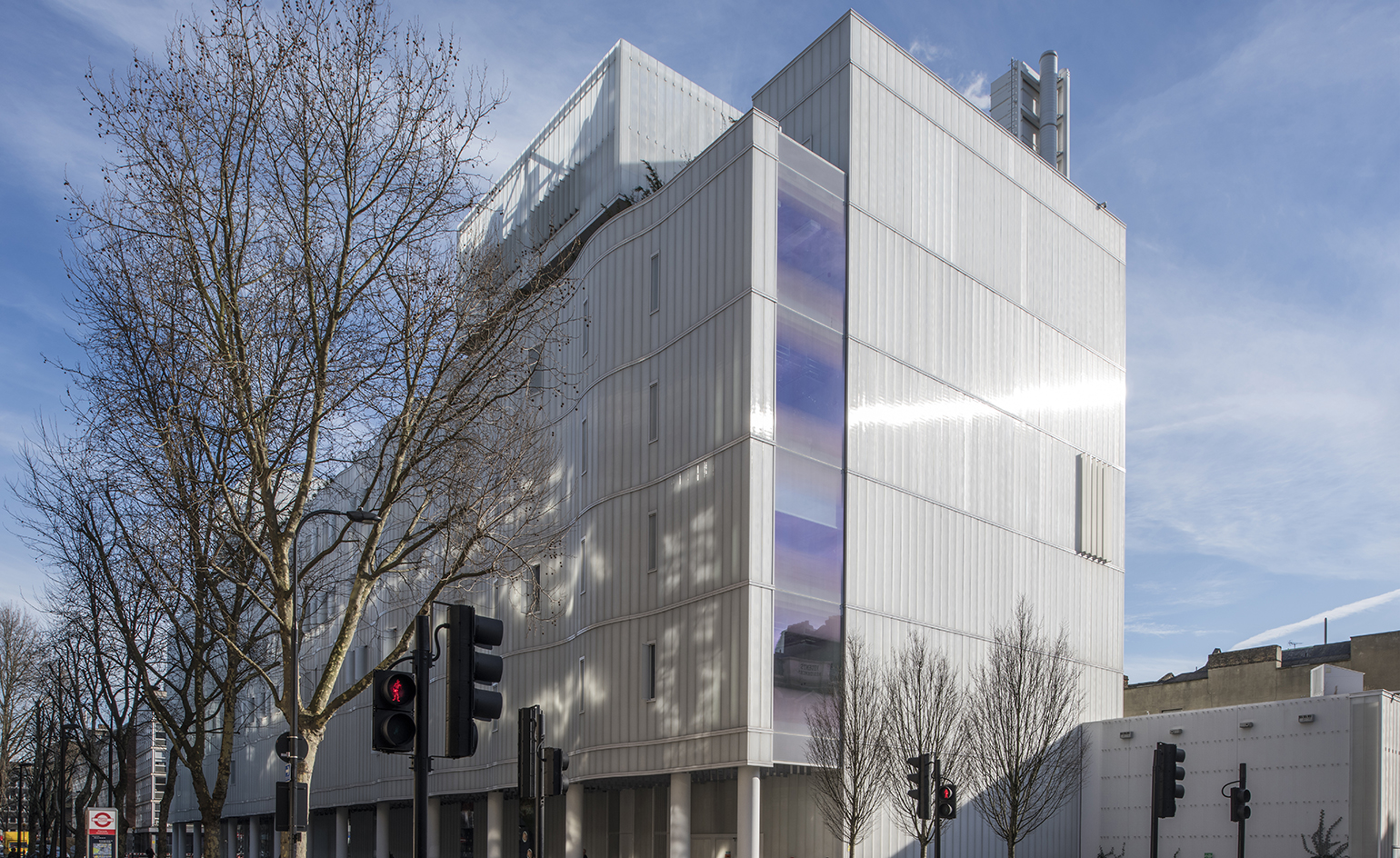
Replacing an existing UCL research centre from 1959, the London school’s brand new Sainsbury Wellcome Centre has just completed. The project, designed by Ian Ritchie Architects, is a state of the art laboratory and is set to be the new home for the Gatsby Computational Neuroscience Unit (GCNU).
Ritchie and his team won the project following an international competition. They were appointed in 2009 to work on this inspiring, cutting edge hub for experimental neuroscience research that was in need for a suitably adaptable and forward thinking home.
Developed by the Gatsby Charitable Trust and the Wellcome Centre, the building should have a minimum operational lifespan of sixty years. It should also offer privacy and protect the sensitive research from overlooking issues frequently associated with such a Central London location. Finally, easy access to services for the researchers, and flexibility were also important to the owners.
There’s little on the clean, gently translucent cast glass exterior to hint to the groundbreaking research going on inside. With the upper floors protected behind the wavy facade and projected out over the pavement, a pleasant public colonnade is created. Expertly produced by German manufacturers Linit/Glasfabrik Lamberts, the structural glass facade makes the whole building glow from within when illuminated at night.
The inventive use of glass does not stop here: the specialist material has a high thermal performance, which means that the building does not require ‘any perimeter heating’, assure the architects. At the same time, windows are strategically placed on the facade, so that users can easily open or close them as needed, allowing fresh air to circulate naturally inside.
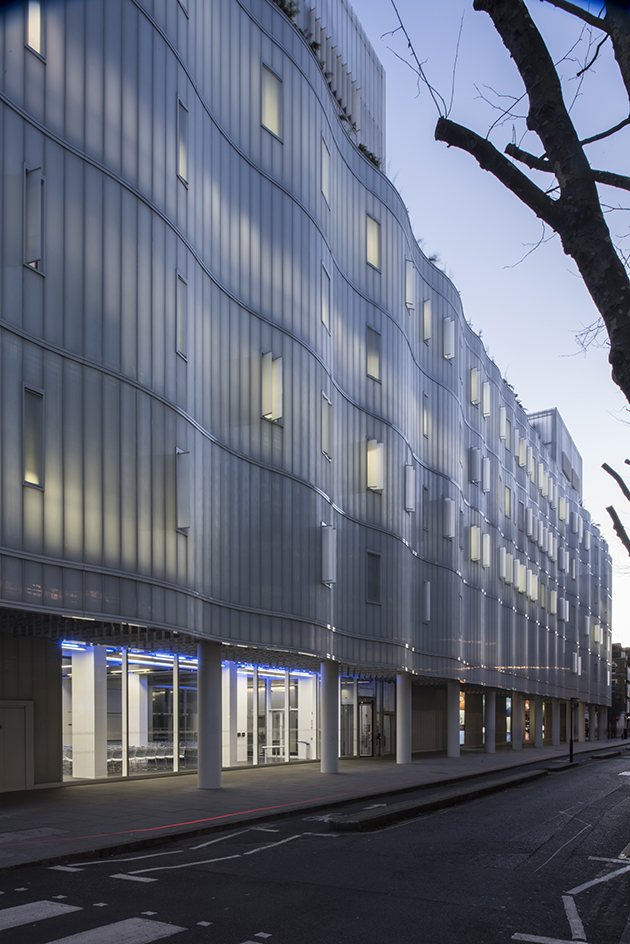
Covered in translucent cast glass, the building will be the new home for the Gatsby Computational Neuroscience Unit (GCNU)
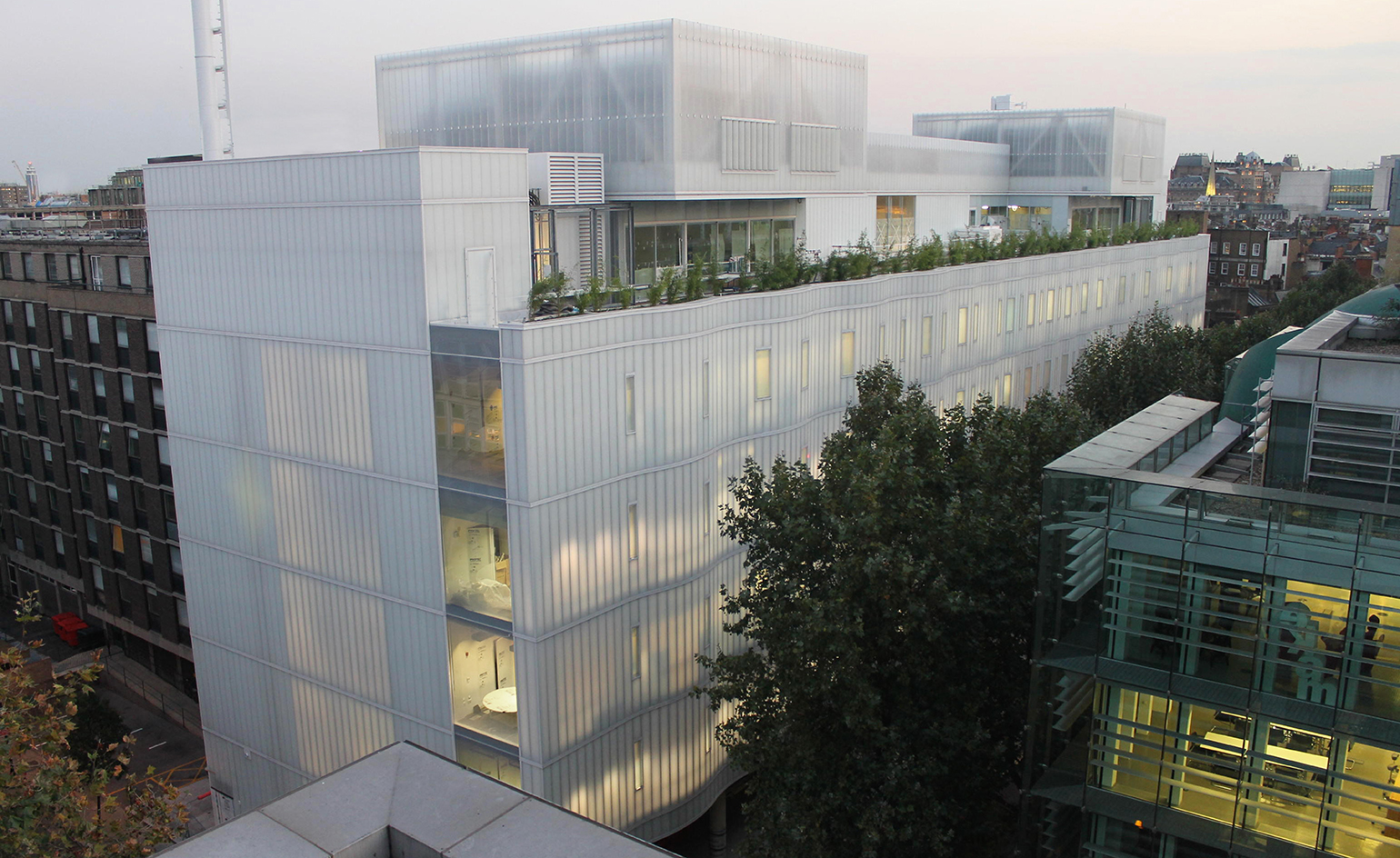
The building’s top floors project out over the pavement, creating a pleasant public colonade on ground level
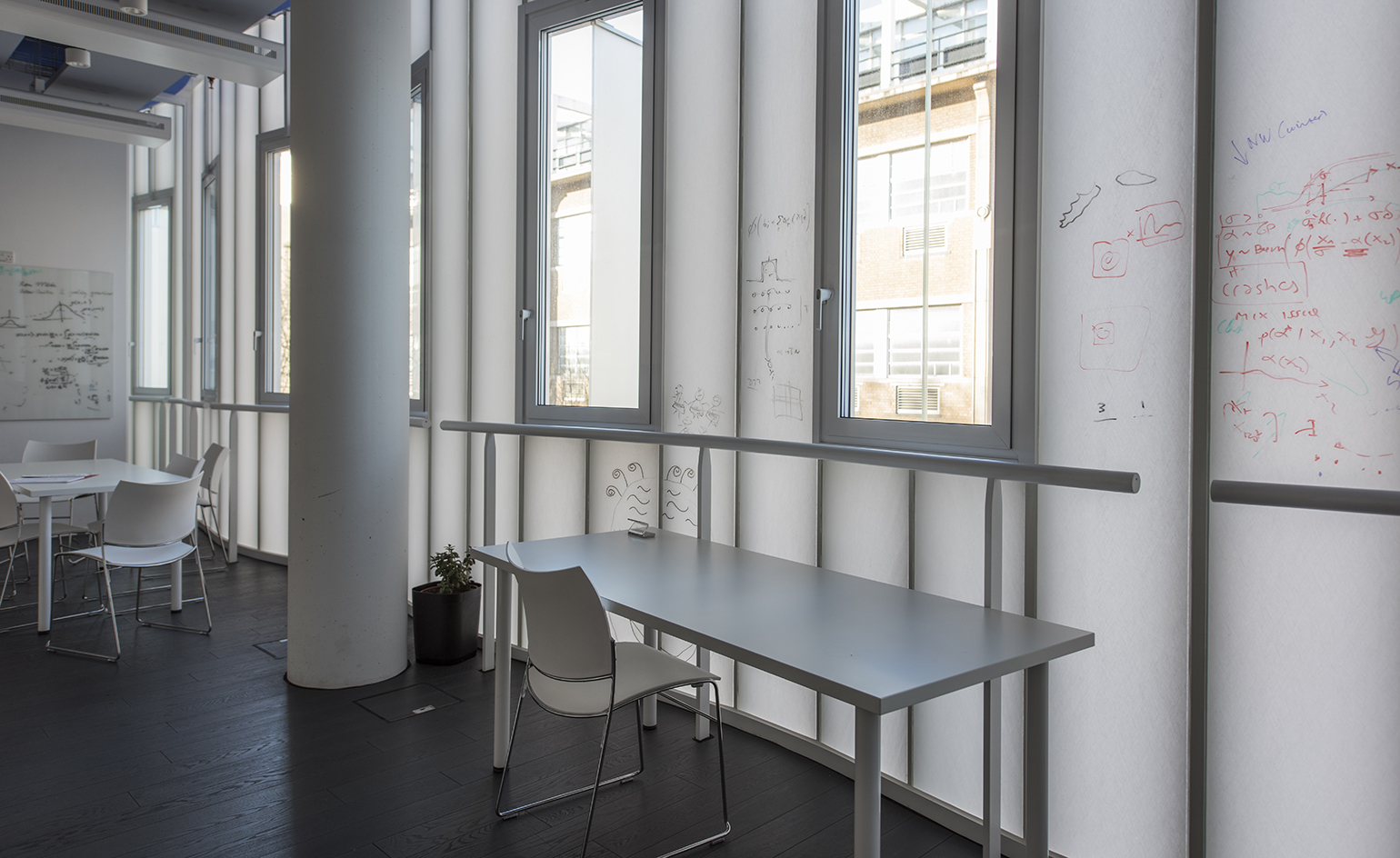
Windows are strategically placed on the façade, so that users can easily open or close them as needed, allowing fresh air to circulate naturally
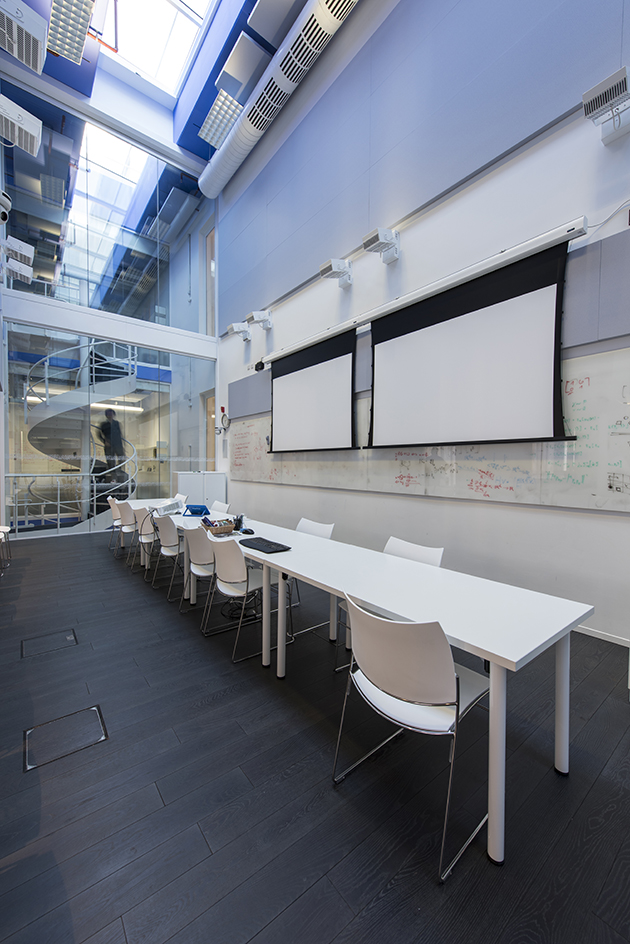
The centre will house an inspiring, cutting edge hub for experimental neuroscience research
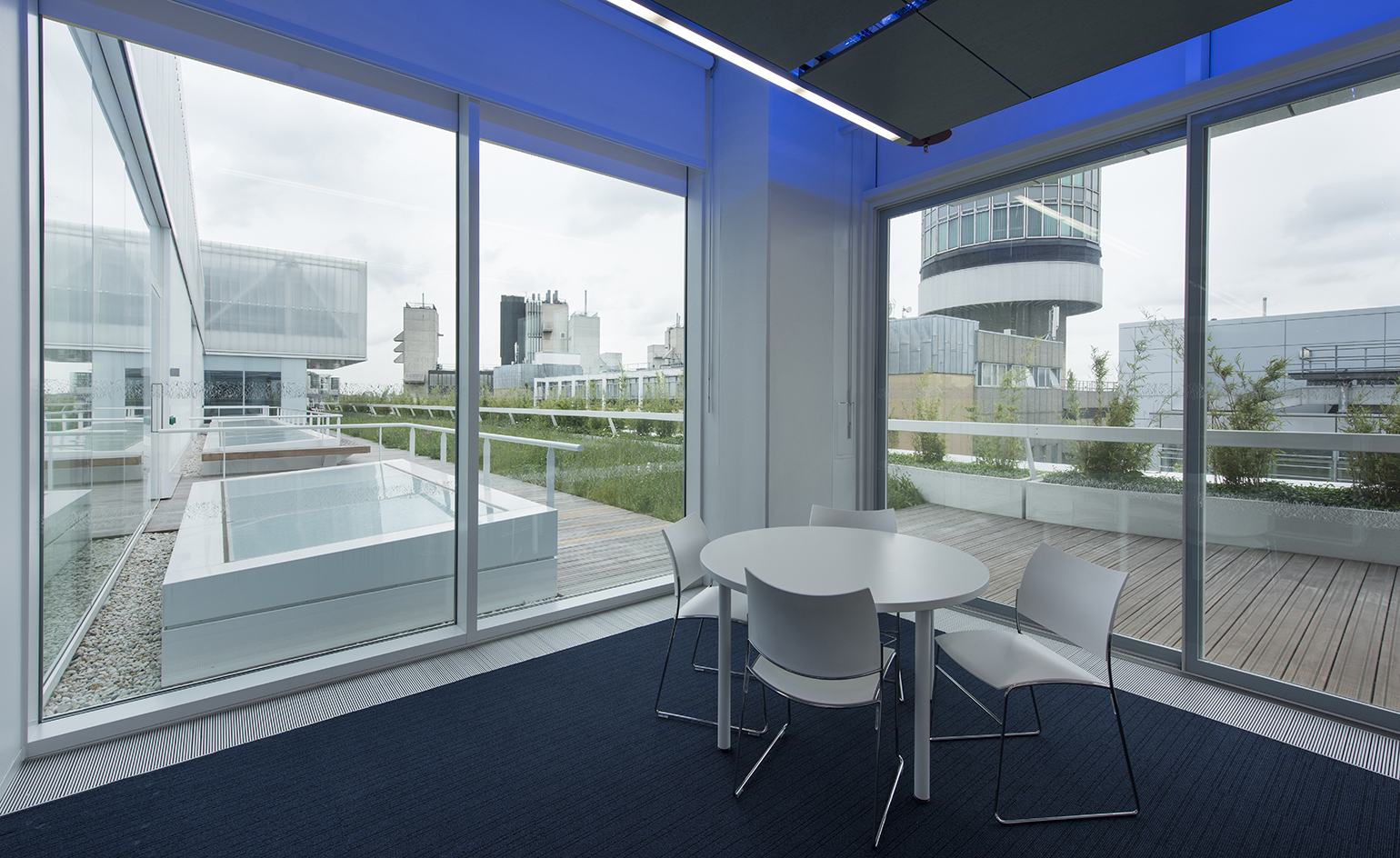
The structure was designed to offer privacy from overlooking issues frequently associated with such a central London location. A green terrace on the top level allows users to enjoy the cityscape.
INFORMATION
For more information on the design visit the Ian Ritchie Architects website
Wallpaper* Newsletter
Receive our daily digest of inspiration, escapism and design stories from around the world direct to your inbox.
Ellie Stathaki is the Architecture & Environment Director at Wallpaper*. She trained as an architect at the Aristotle University of Thessaloniki in Greece and studied architectural history at the Bartlett in London. Now an established journalist, she has been a member of the Wallpaper* team since 2006, visiting buildings across the globe and interviewing leading architects such as Tadao Ando and Rem Koolhaas. Ellie has also taken part in judging panels, moderated events, curated shows and contributed in books, such as The Contemporary House (Thames & Hudson, 2018), Glenn Sestig Architecture Diary (2020) and House London (2022).
-
 Put these emerging artists on your radar
Put these emerging artists on your radarThis crop of six new talents is poised to shake up the art world. Get to know them now
By Tianna Williams
-
 Dining at Pyrá feels like a Mediterranean kiss on both cheeks
Dining at Pyrá feels like a Mediterranean kiss on both cheeksDesigned by House of Dré, this Lonsdale Road addition dishes up an enticing fusion of Greek and Spanish cooking
By Sofia de la Cruz
-
 Creased, crumpled: S/S 2025 menswear is about clothes that have ‘lived a life’
Creased, crumpled: S/S 2025 menswear is about clothes that have ‘lived a life’The S/S 2025 menswear collections see designers embrace the creased and the crumpled, conjuring a mood of laidback languor that ran through the season – captured here by photographer Steve Harnacke and stylist Nicola Neri for Wallpaper*
By Jack Moss
-
 An octogenarian’s north London home is bold with utilitarian authenticity
An octogenarian’s north London home is bold with utilitarian authenticityWoodbury residence is a north London home by Of Architecture, inspired by 20th-century design and rooted in functionality
By Tianna Williams
-
 What is DeafSpace and how can it enhance architecture for everyone?
What is DeafSpace and how can it enhance architecture for everyone?DeafSpace learnings can help create profoundly sense-centric architecture; why shouldn't groundbreaking designs also be inclusive?
By Teshome Douglas-Campbell
-
 The dream of the flat-pack home continues with this elegant modular cabin design from Koto
The dream of the flat-pack home continues with this elegant modular cabin design from KotoThe Niwa modular cabin series by UK-based Koto architects offers a range of elegant retreats, designed for easy installation and a variety of uses
By Jonathan Bell
-
 Are Derwent London's new lounges the future of workspace?
Are Derwent London's new lounges the future of workspace?Property developer Derwent London’s new lounges – created for tenants of its offices – work harder to promote community and connection for their users
By Emily Wright
-
 Showing off its gargoyles and curves, The Gradel Quadrangles opens in Oxford
Showing off its gargoyles and curves, The Gradel Quadrangles opens in OxfordThe Gradel Quadrangles, designed by David Kohn Architects, brings a touch of playfulness to Oxford through a modern interpretation of historical architecture
By Shawn Adams
-
 A Norfolk bungalow has been transformed through a deft sculptural remodelling
A Norfolk bungalow has been transformed through a deft sculptural remodellingNorth Sea East Wood is the radical overhaul of a Norfolk bungalow, designed to open up the property to sea and garden views
By Jonathan Bell
-
 A new concrete extension opens up this Stoke Newington house to its garden
A new concrete extension opens up this Stoke Newington house to its gardenArchitects Bindloss Dawes' concrete extension has brought a considered material palette to this elegant Victorian family house
By Jonathan Bell
-
 A former garage is transformed into a compact but multifunctional space
A former garage is transformed into a compact but multifunctional spaceA multifunctional, compact house by Francesco Pierazzi is created through a unique spatial arrangement in the heart of the Surrey countryside
By Jonathan Bell